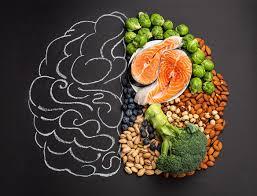Hyperactivity is a term often associated with Attention-Deficit/Hyperactivity Disorder (ADHD), a neurodevelopmental condition that affects both children and adults. It's characterized by excessive movement, impulsivity, and difficulty maintaining attention. For parents, teachers, and individuals navigating the challenges of ADHD, understanding hyperactivity symptoms, exploring an ADHD diet, considering ADHD and therapy, and evaluating hyperactive treatment options is essential.
This comprehensive article breaks down each aspect to help build a more informed approach to managing ADHD and its associated hyperactivity.
What Are Hyperactivity Symptoms?
Hyperactivity symptoms can vary in severity and presentation, especially between children and adults. While it’s often first noticed in childhood, many people continue to experience symptoms into adulthood.
Common Hyperactivity Symptoms in Children:
-
Constant fidgeting or tapping hands and feet
-
Inability to sit still (especially in calm or quiet environments)
-
Excessive talking or interrupting others
-
Running or climbing in inappropriate situations
-
Difficulty waiting their turn
-
Acting without thinking
Hyperactivity Symptoms in Adults:
-
Restlessness and an inability to relax
-
Impulsive decisions or speech
-
Trouble concentrating or staying focused
-
Difficulty managing time or completing tasks
-
Frequent job changes or relationship issues due to impulsivity
Recognizing these signs is the first step in diagnosis and helps guide the best approach for treatment and support.
The Role of an ADHD Diet in Managing Hyperactivity
While medication and therapy are the most common approaches to ADHD management, many families explore the impact of nutrition. An ADHD diet doesn’t cure the condition but may help reduce hyperactivity symptoms and improve focus and behavior.
Key Components of an Effective ADHD Diet:
-
Protein-rich foods: Lean meats, eggs, beans, and nuts can help regulate blood sugar and support neurotransmitter function.
-
Complex carbohydrates: Whole grains, vegetables, and fruits provide steady energy and may prevent mood swings.
-
Omega-3 fatty acids: Found in fish (like salmon and tuna), flaxseeds, and walnuts, omega-3s are linked to improved cognitive function and reduced impulsivity.
-
Iron and zinc: These minerals support brain function and may improve attention when levels are optimized.
-
Avoiding additives and sugar: Many parents report behavioral improvements when children avoid artificial dyes, preservatives, and high-sugar foods.
A balanced ADHD diet is not a standalone solution but can complement other interventions to enhance overall well-being.
The Importance of ADHD and Therapy
When addressing ADHD, combining medical treatment with therapy offers the most holistic approach. Understanding the link between ADHD and therapy helps ensure long-term success in managing hyperactivity symptoms.
Types of Therapy for ADHD:
-
Behavioral Therapy:
-
Especially effective in children
-
Focuses on rewarding positive behavior and reducing unwanted actions
-
Teaches parents and teachers strategies to support children effectively
-
-
Cognitive Behavioral Therapy (CBT):
-
Beneficial for older children, teens, and adults
-
Helps individuals identify negative thought patterns and replace them with healthier ones
-
Aids in managing impulsivity, low self-esteem, and emotional dysregulation
-
-
Family Therapy:
-
Encourages open communication among family members
-
Helps relatives understand ADHD and reduce household stress
-
-
Social Skills Training:
-
Supports children in developing healthy relationships
-
Focuses on learning empathy, turn-taking, and handling peer pressure
-
ADHD and therapy work best when integrated with other treatment methods, forming a personalized care plan.
Exploring Hyperactive Treatment Options
When it comes to hyperactive treatment, there’s no one-size-fits-all approach. Treatments are tailored based on age, symptom severity, and personal preferences.
Medication:
Stimulant medications, such as methylphenidate (Ritalin) or amphetamine-based drugs (Adderall), are among the most researched and commonly prescribed hyperactive treatment options. They work by increasing the levels of dopamine and norepinephrine in the brain—chemicals associated with attention and impulse control.
Non-stimulant medications, such as atomoxetine (Strattera), are also effective and may be a better fit for individuals who don’t respond well to stimulants or have other health conditions.
Lifestyle Adjustments:
In addition to medication, lifestyle changes play a vital role in treating hyperactivity symptoms:
-
Consistent routines help children feel secure and reduce impulsive behavior.
-
Physical activity provides an outlet for excess energy and improves mood.
-
Sleep hygiene is crucial, as poor sleep can worsen symptoms.
Educational Support:
Children with ADHD often benefit from an Individualized Education Plan (IEP) or 504 Plan in school. These accommodations can include:
-
Extra time on tests
-
Modified homework assignments
-
Behavior support plans
-
A quiet space for focusing
Integrating All Four Aspects for Holistic ADHD Management
A truly effective ADHD management strategy incorporates all elements discussed:
-
Recognizing and tracking hyperactivity symptoms ensures timely interventions.
-
Implementing a healthy ADHD diet supports brain function and stabilizes behavior.
-
Combining ADHD and therapy builds essential coping and emotional skills.
-
Evaluating and customizing hyperactive treatment offers the medical and structural support needed to thrive.
The journey with ADHD can be complex, but it is also highly manageable with the right tools and support systems in place. Education, early intervention, and a flexible approach are keys to success.
Final Thoughts
While ADHD and hyperactivity can be overwhelming, especially when symptoms first appear, understanding the full spectrum of management options makes a huge difference. From identifying hyperactivity symptoms to building a strong ADHD diet, engaging in effective ADHD and therapy, and selecting the right hyperactive treatment, each step contributes to a more stable and fulfilling life.
Families, educators, and individuals dealing with ADHD should never hesitate to seek professional guidance. With compassion, commitment, and collaboration, managing hyperactivity becomes less of a challenge and more of an opportunity for growth.



